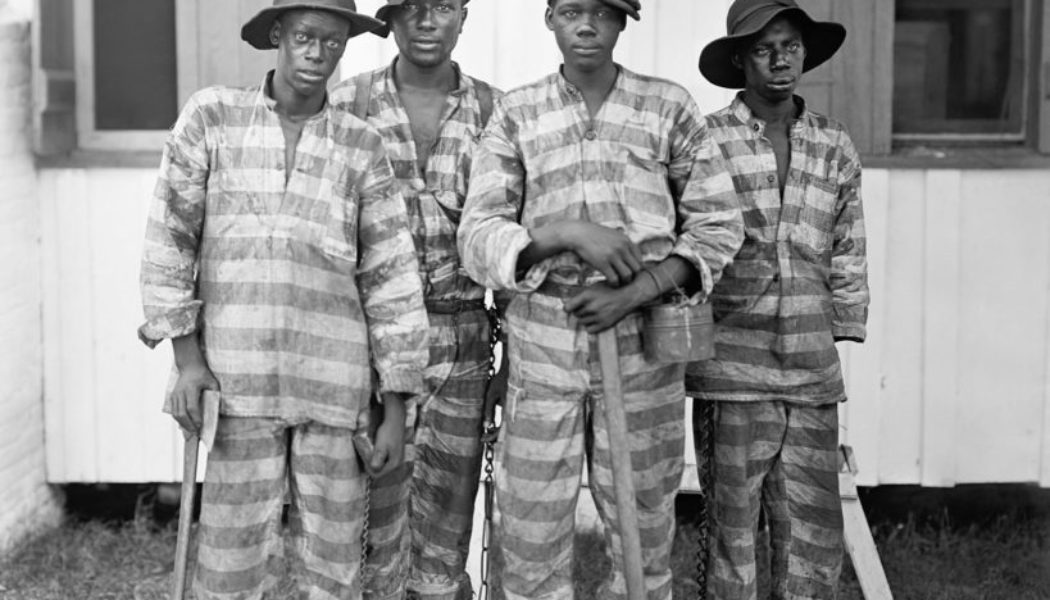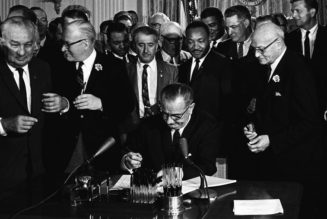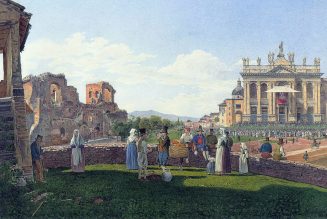In recent years, many writers have offered advice about how to manage a Thanksgiving conversation with friends or family members who hold very different opinions about politics, religion, or the newly radioactive topics of epidemiology and immunology. Most of these articles recommend that we avoid areas of known disagreement for fear of disrupting the emotional ecosystem of a holiday get-together.
But what should we do when we’re in the classroom, and the uncomfortable topic is historical rather than political? Specifically, what do we do about historical events in which some students’ ancestors mistreated other students’ ancestors? My course on the history of our country after 1890 includes what I’ve called “perhaps the most disturbing class you will ever have at The Heights”—the class on convict leasing. It’s what we might call Ugly History, a story of large-scale cruelty and dehumanization that stands out even against the backdrop of our nation’s troubled racialized past. And it does shock the students; the room is usually silent when we talk about it. So I was a little surprised when the Harmony Club asked me to talk about it again at a club event over the lunch hour. A colleague wondered aloud whether that would really contribute to greater racial harmony, and I understood his doubts. Why talk about that if the goal is harmony? Wouldn’t it be better to forget the unforgivable? Or if we can’t quite forget it, shouldn’t we at least agree not to talk about it when we’re all trying to get along?
But I have found it to be an important lesson in class, and I think the Harmony Club leaders were right to want to talk about it more rather than less.
The Reincarnation of Slavery
First, though, let’s force ourselves to look at the ugly episode in U.S. history that I’ve rather antiseptically called “convict leasing.” Amendment XIII to the U.S. Constitution abolished slavery in 1865, but there was a loophole: slavery and involuntary servitude were abolished “except as a punishment for crime whereof the party shall have been duly convicted.” Beginning in the 1880s, in several southern states, many black men (and less frequently, black women) were essentially kidnapped, dragged before kangaroo courts, and “duly convicted” of crimes for which the penalty was, as a practical matter, slavery. The story is told in Douglas Blackmon’s copiously sourced 2008 book, Slavery by Another Name, which I can’t recommend highly enough.
This all happened through ostensibly legal processes. There was typically no jury convicting these unfortunate men and women because the alleged crimes were not serious enough to require a jury under state law. Instead, a justice of the peace determined guilt or innocence—and since he was complicit in the whole scheme, acquittal was only a theoretical possibility. Convictions were often based on bogus crimes (like “vagrancy” or “speaking loudly in the presence of a woman”), perjured testimony, or both. But the predestined conclusion was always the same: the court imposed a fine, plus court costs to pay the kidnappers and perjurers, plus a fee for the crooked justice of the peace, all of which totaled more than the defendant (now a convict) could afford. That meant the unfortunate convict had to go to jail.

A Southern Chain Gang, ca. 1903 Source: Wikimedia Commons
Or would have had to go to jail, except that representatives from the coal mines and steel mills just happened to be present at these irregular proceedings, and they offered to “act as surety” for the convicts and pay their fines. Why would they do that? Because paying the fine gave the industrialists the right to the convicts’ labor until the debt was paid. Convicts “leased” from the state this way were typically given the most punishing physical labor, like digging out coal and smelting iron, because that work was unskilled yet physically demanding, work so unpleasant that free people would demand high wages for it. Leased convicts were much cheaper, precisely because they could not leave. They were manacled, beaten, and otherwise treated like slaves had been treated before the war. Or rather, worse than slaves, because foremen on the jobs cared even less for the welfare of the workers than antebellum masters had cared for the welfare of their slaves. Ill-fed, ill-clothed, ill-housed, and ill-treated, the convicts died on the job in large numbers and their bodies were sometimes unceremoniously dumped in shallow, unmarked graves.
Students find it hard to believe how many people were victimized this way and for how long. But the shocking truth is that we know at least 10,000 convicts had been effectively re-enslaved this way by the end of the 1880s. It would be comforting to think that most white southerners were unaware of it, but at least two southern states got roughly ten percent of their annual state revenues from these practices. It would be comforting to think that no one outside the south knew about it back then, but that’s not true either. In fact, Theodore Roosevelt’s Department of Justice actually prosecuted some re-enslavers for these practices—and won convictions. But despite that victory, other prosecutions did not follow. Somehow (and what a lot of sins that word covers), Congress did not prohibit this re-enslavement by convict leasing until the end of World War II. The system functioned not only as a way of robbing black Americans of their freedom, but as a way of blocking the economic ascent of the black community and stifling the integration of the Old South.
Why the Bad Old Days Still Matter
That’s very Ugly History, ugly enough to create or sustain a burning sense of injustice in almost every student who hears it. And therein lies the danger, because students today are often encouraged to experience that sense of injustice in very different ways depending on their backgrounds. With the public imagination increasingly fixated on the ways in which we differ rather than the ways in which we are alike, some students’ emotional responses may lean (or be pushed) toward righteous indignation, while other students’ emotional responses may lean (or be pushed) toward a sort of inherited shame. So much for harmony, right?
Yet I believe that Ugly History has within it the potential to unify those of us who study it. Because what actually happens in class is that we are all horrified; we all identify with the victimized men and women who for decades had to live with the feeling of being unsafe in their own skin.
Most worthwhile historical study unifies us to some extent because history’s lessons reach us more in our humanity than in our particularity. We all want to know how we got here; we all want to improve our thinking about the future by expanding our understanding of the past; we all want to know our forebears’ failures so we can avoid them, and their successes so we can repeat them. But above all, we want to understand our own human nature better by watching how humans pretty much just like us have acted and interacted for thousands of years. To the extent that we reach sufficient consensus in each of these dimensions of study, our shared history becomes a basis for shared understanding of the human condition.
But Ugly History is particularly powerful in this regard because it demands, and therefore cultivates, a shared commitment to the truth. Convict leasing happened. And that is not only a truth but a truth suppressed, because virtually no one born in the 1960s or later heard anything about it in their history classes. (I’ve bought a lot of used history texts to try to find some mention. I’m still looking.) We do not, of course, include everything that has ever happened in our history classes, but the filter we apply must be a filter of historical significance—not “ugliness,” not whether it makes us feel good about ourselves. If convict leasing meets the test of historical significance (and it does), then not talking about it is dishonest. Just as telling the truth sometimes requires courage, suppressing the truth because it’s ugly is an act of intellectual and moral cowardice. And just as a family often comes to appreciate its unity most deeply when tragedy strikes, we affirm our shared commitment to the truth—including our duty to be honest with ourselves and with each other—when we confront episodes that trigger those emotional responses of outrage and shame. When we do that together, we counteract the forces driving us apart.
In addition, Ugly History can help defeat destructive demagoguery of all stripes, and convict leasing is a case in point. To explain persistent statistical disparities for black and white Americans, white supremacists tell a story of racial inferiority—and that story usually asserts or assumes that slavery ended in 1865 and that black Americans had no significant cause for complaint after that date. By contrast, writers from a Marxist perspective posit systemic and invincible racism—and that story usually asserts or assumes that U.S. race relations have been consistently horrific, before and after 1865, before and after the twentieth-century civil rights era, with white people trying one thing after another to keep black people down. The white supremacist story weaponizes history against black people; the Marxist story weaponizes history against white people.
But the ugly truth about practices like convict leasing undermines both these simplistic accounts. The fact that our society actively oppressed black citizens in many places for at least fifty years after the end of Reconstruction strongly contradicts the lie that everything has been equal since 1865. And the fact that, after decades of moral bankruptcy in this area, we did stop, strongly contradicts the contrary assertion that racism is an ineliminable part of who we are, and that colorblindness is an impossible dream. We are left in the messy middle, affirming that we are not always good and that we are always capable of becoming better.
But perhaps most importantly, Ugly History shows us how very alike we are. We are alike not only in our universal revulsion from the ugliness, but in our most universally inherited trait: our sin. As Solzhenitsyn said, the line between good and evil runs through every human heart. We recognize, through Ugly History, that we are all capable of the depravity that led many people of different backgrounds to act with almost unimaginable cruelty toward their fellow men and women. And yet, while Ugly History is generally long on villains, it is seldom without its heroes. We should recognize ourselves in their midst as well—recognize that we are all capable of the virtue that led many good people of different backgrounds, from William Wilberforce and William Lloyd Garrison to Frederick Douglass and Harriet Tubman, to fight tirelessly for an end to slavery. Both the depravity and the virtue belong to all of us, regardless of our ancestry. As humans, we inherit the entire human legacy, the good as well as the bad.
The Art of Remembering Bad Times Well
But there’s a catch:
In order for us to draw unity from the study of Ugly History, we need to forswear two very human tendencies: the tendency to blame and the tendency to get defensive when blamed. Our study of Ugly History only unites us when we understand that we are all on the same team today, regardless of the team we would have been arbitrarily sorted onto in the 1880s, 1860s, or 1620s.
It’s not that no one is to blame for the past; it’s that none of them are alive. There are plenty of people who should be absolutely mortified about convict leasing (and as I write these words on All Souls Day, maybe they are!), but they are dead. They are beyond our power to condemn or absolve. We can feel sorrow for the sins of the dead, and sympathy for those who continue to live with the material and spiritual consequences of a past we cannot change; I’d like to think that all our students feel both of those things. But we cannot feel contrition for things we have not done, and we cannot reasonably ask others to make confession and seek absolution for things they have not done.
Consequently, in a classroom full of students whose lives have been touched by the nation’s past sins in very different ways, it is not only unjust but counterproductive to take sides. Above all, we cannot adopt the racial divisions of the past and divide ourselves accordingly. To put it in terms familiar to Heights students, we shouldn’t be playing “racism Thud,” squaring off and throwing the heavy burden of our racial past at each other. Our experience when studying Ugly History should be more like watching a documentary together and observing that we overwhelmingly love and hate the same parts of the story. Our shared reactions to such horrific injustices lets us in on what G.K. Chesterton called “the terrible secret that men are men—which is another way of saying that they are brothers.”
The Declaration of Independence includes a long section on grievances, but that’s not the part that everyone knows. It’s not the part Abraham Lincoln and Martin Luther King, Jr., made the cornerstone of the civic renewals they proposed. The part of the Declaration that everyone knows is the part that proclaimed the emergence of a new nation, founded upon an affirmation of universal human equality. But famously, the founding fathers didn’t understand the meaning of that affirmation nearly as well as Lincoln would in his day and King would in his. It took a lot of Ugly History to get where we are today. Maybe Ugly History can help us go farther still.
Join Our Telegram Group : Salvation & Prosperity








